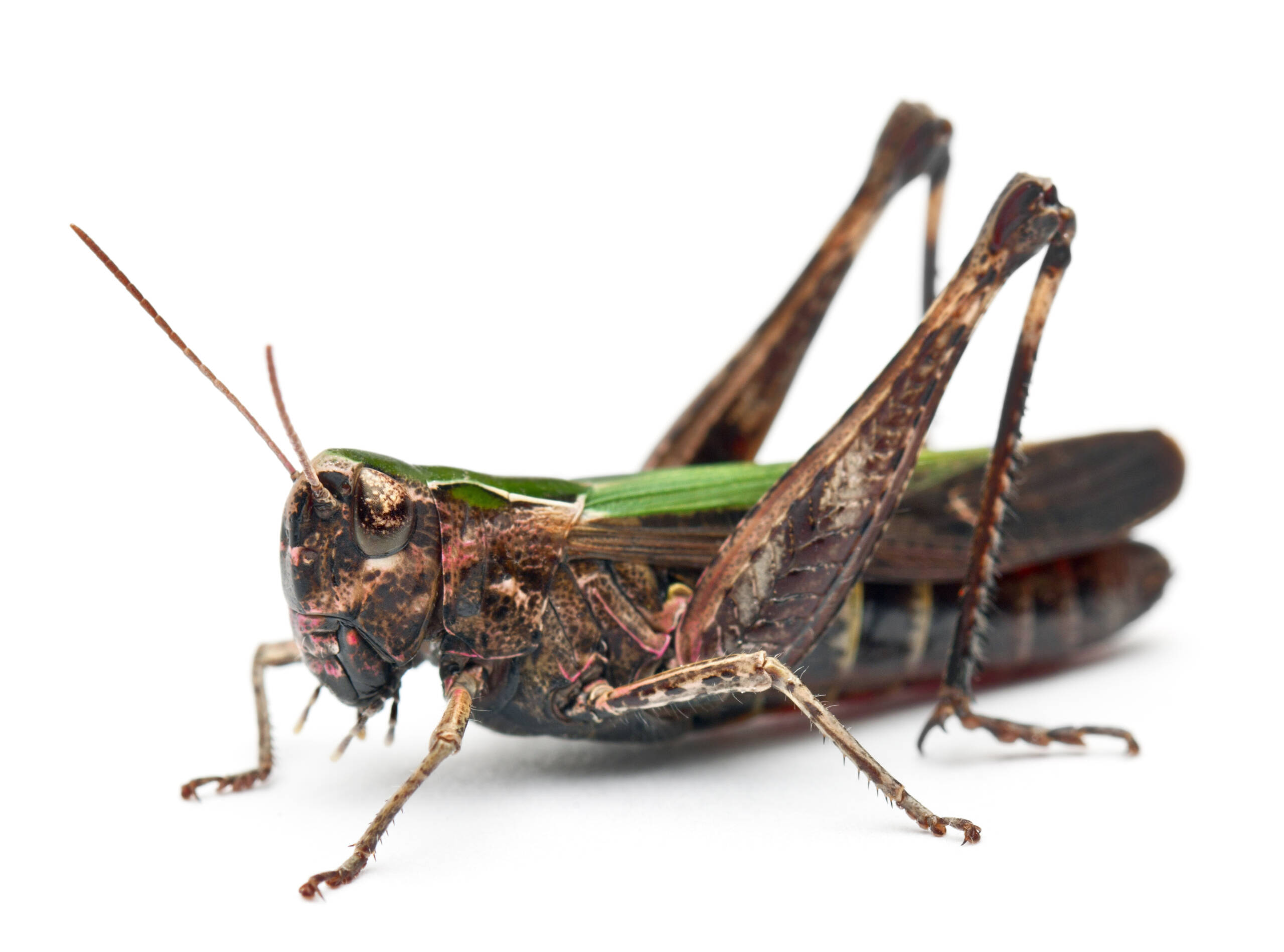1. About Crickets
Crickets are small, nocturnal insects belonging to the family Gryllidae. Known for their distinctive chirping sounds, crickets are often associated with warm weather and can be found in a variety of habitats, from fields and forests to urban areas. Their chirping is produced by rubbing their wings together, and it is primarily used by males to attract females. While crickets are not harmful to humans, they can become a nuisance, especially when they invade homes in large numbers. Some species of crickets are also known to damage plants and crops by feeding on leaves and stems.
2. How to Get Rid of Crickets
Crickets can be controlled using several methods. The most effective approach includes sealing cracks and gaps around windows, doors, and foundations to prevent them from entering the house. Removing potential hiding spots, such as piles of wood or leaves, will reduce the number of places where crickets can thrive. If crickets are already inside, you can trap them using sticky traps or use insecticides. Natural deterrents such as diatomaceous earth, essential oils like peppermint or eucalyptus, or even placing a few bay leaves around the house can help keep crickets away.
3. Introduction
Crickets are among the most recognizable insects, particularly during the warmer months when their continuous chirping fills the air. Their sound is produced by rubbing their hind wings against their forewings in a process called “stridulation.” Crickets are not typically harmful to humans, but they can be a nuisance, especially when they invade homes in search of food or shelter. In addition to their role in the natural food chain, crickets are known for their contribution to folklore and culture, often symbolizing good luck or the arrival of warm weather.
4. Identification of Crickets
Crickets are typically 1 to 2 inches (25-50 mm) long, with slender bodies and long antennae. They are usually brown or black, with slightly flattened bodies and long, powerful hind legs that they use for jumping. Male crickets produce the characteristic chirping sound, which is a series of rhythmic pulses. Crickets are most active at night and prefer dark, damp areas such as basements, crawl spaces, or behind furniture. They are often confused with grasshoppers due to their similar appearance, but crickets tend to be more robust and have shorter, wider wings.
5. Behavior and Habitat
Crickets are nocturnal creatures, coming out at night to feed, mate, and chirp. They are typically found in dark, moist areas, such as under rocks, in tall grass, or in wooden piles. Crickets can also invade homes, seeking warmth and food, particularly during the colder months. Their behavior is driven by their need to find mates and shelter. The male’s chirping serves as a mating call to attract females, with the rate of chirping often being a sign of their age or health. Crickets will seek food such as plants, decaying matter, or even small insects.
6. Feeding Habits
Crickets are omnivorous, feeding on a variety of organic materials. They typically eat plants, fruits, and vegetables but will also scavenge for decaying matter and even smaller insects. In homes, they may feed on stored food, fabrics, or any organic material they can access. While they do not directly harm humans, their presence in kitchens and pantries can lead to contamination of food. If there is a significant infestation, crickets may also feed on the roots and leaves of plants, causing damage to gardens or crops.
7. Prevention and Protection
To prevent crickets from entering your home, it’s important to seal any cracks or gaps around doors, windows, and foundations. Keeping your home dry and free from clutter will make it less appealing to crickets. Regularly cleaning up food crumbs and spills will remove any potential food sources. If you have plants outside, trimming tall grass and clearing away debris can also help keep crickets at bay. For homes that are already infested, sticky traps or using insecticidal sprays can effectively reduce their numbers.
8. Methods of Control
Cricket control can be achieved using a variety of methods, including both natural and chemical approaches. Preventing access by sealing entry points is one of the most effective strategies. Inside the home, sticky traps can be used to capture crickets, while diatomaceous earth can be sprinkled around baseboards to kill them. Insecticides can also be used around the perimeter of the house or in areas where crickets are most commonly found. However, using non-toxic deterrents, such as essential oils or bay leaves, is a safer alternative, especially in homes with pets and children.
9. Environmental Impact and Ecology
Crickets play an important ecological role by breaking down decaying organic matter and contributing to nutrient cycling. They also serve as a food source for a wide range of predators, including birds, reptiles, and mammals. While they can cause some damage to plants, their overall impact on the environment is minimal. Crickets are also considered beneficial to ecosystems because they aerate the soil as they dig and help in the decomposition process by feeding on dead plant material. Despite their occasional nuisance in homes, they play a valuable role in the natural world.
10. Conclusion
Crickets are fascinating insects that are an integral part of many ecosystems. Though they are not harmful to humans, they can become a nuisance when they invade homes or damage plants. With proper prevention and control methods, it’s possible to manage cricket populations without causing harm to the environment. Whether you’re dealing with a few crickets inside your home or protecting your garden from their feeding habits, taking steps to eliminate potential hiding spots and food sources will help keep them under control.


